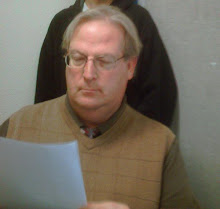PHYS 1100 LESSON 3 FOR
THURSDAY, AUGUST 05, 2010
I Introduction
II Logistics: Seating, Syllabus, etc.
III Turn in Assignments Due: Homework 1, Essay 1, etc. and Return of Papers
IV Test 1
V Mind Game 1
VI Review of Lesson 2: Vector Physics/Motion
Vectors
Virtual arrow: magnitude (size) and direction
heads, tails
adding vectors ≠ adding algebraically
adding vectors
align the head of one vector with the tail of another; never put 2 tails together, or 2 heads
together: →→ is
okay; NOT →←
and NOT ←→
→↑ is okay; but ↑→ is not okay; and →↑ is not okay
A vector usually has an arrow (→) above it: , or a “hat” or “carrot” (^) above it:
Pythagoras (576 BC – 495 BC)
Velocity, acceleration, force, momentum, or any number of other concepts can be represented as vectors
Components: see above; the x-component of vector A+B is A; the y-component is B.
If a vector is not directly along the x-axis or along the y-axis, it can be broken down into its x- and y- components
Acceleration vector, along an inclined plane: a = g sin θ, where θ is the angle shown:
Projectile Motion
Range, height, angle (above)
Lesson 3: Circular motion
v = 2pr/P Э 2pr = c (circumference); r = radius; P = period, in seconds, to make one trip around the circle; and P = 1/n, Э n = the frequency in cycles per second (Hz).
v2/r = 4p2r/P2, but since P = (1/n), then P2 = (1/ n)2, or (1/P2) = n2
So, v2/r = 4p2rn2 which can be written as v2/r = (2pn)2 r
And, in circular motion, a = v2/r =
(2pn)2 r, “centripetal acceleration”
However, 2pn = w in rad/sec, thus a = w2r
If part of a circle, say, s, is the arc, AB, then we can say that for small “s” that r sin θ = s, and if it’s even smaller, then r θ = s
because for small θ, sin θ = θr where the angle, θ, is measured in radians, not degrees. 360° = 2p radians, so 1 radian = 57.3°.
Since v = dist/time, then v = s/t = r (θ/t) but is another way of writing (θ/t) = w, so
v = wr and v2/r = w2r = a, “acceleration”
V Lesson 3: Newton's Laws of Motion
Objects at rest, stay at rest; objects in motion stay in motion; UNLESS acted upon by an Fext.
F = m a -à Universal Law of Gravity
Every force has an equal and opposite force, or, F1 = - F2.
Units of force are “Newtons”, kg m/s2. = N
F = ma
V = x/t
V Laboratory Exercise 3: Circular Motion
Centrifugal force is a reaction to a real force. Centripetal
VI HWK Assignment 2: 5-9 and do Problems 1, 3, 9, 13, 19, 25, 29, 31, and 39 on pp 140-143; Problems 1, 3, 9, 13, 19, 25, 29, 31, 39, 53, 63, and 65 on pp 177-184; Problems 1, 3, 9, 13, 19, 25, 29, 31, 39, and 53 on pp 210-213; and Problems 1, 3, 9, 13, 19, 25, 29, 31, 39, and 53 on pp 244-248; Problems 1, 3, 9, 13, 19, 25, 29, 31, 39, and 53 on pp 289-292.due 8/12
VII Essay 2: Sir Isaac Newton, due 8/12
Thursday, August 5, 2010
Subscribe to:
Post Comments (Atom)

No comments:
Post a Comment